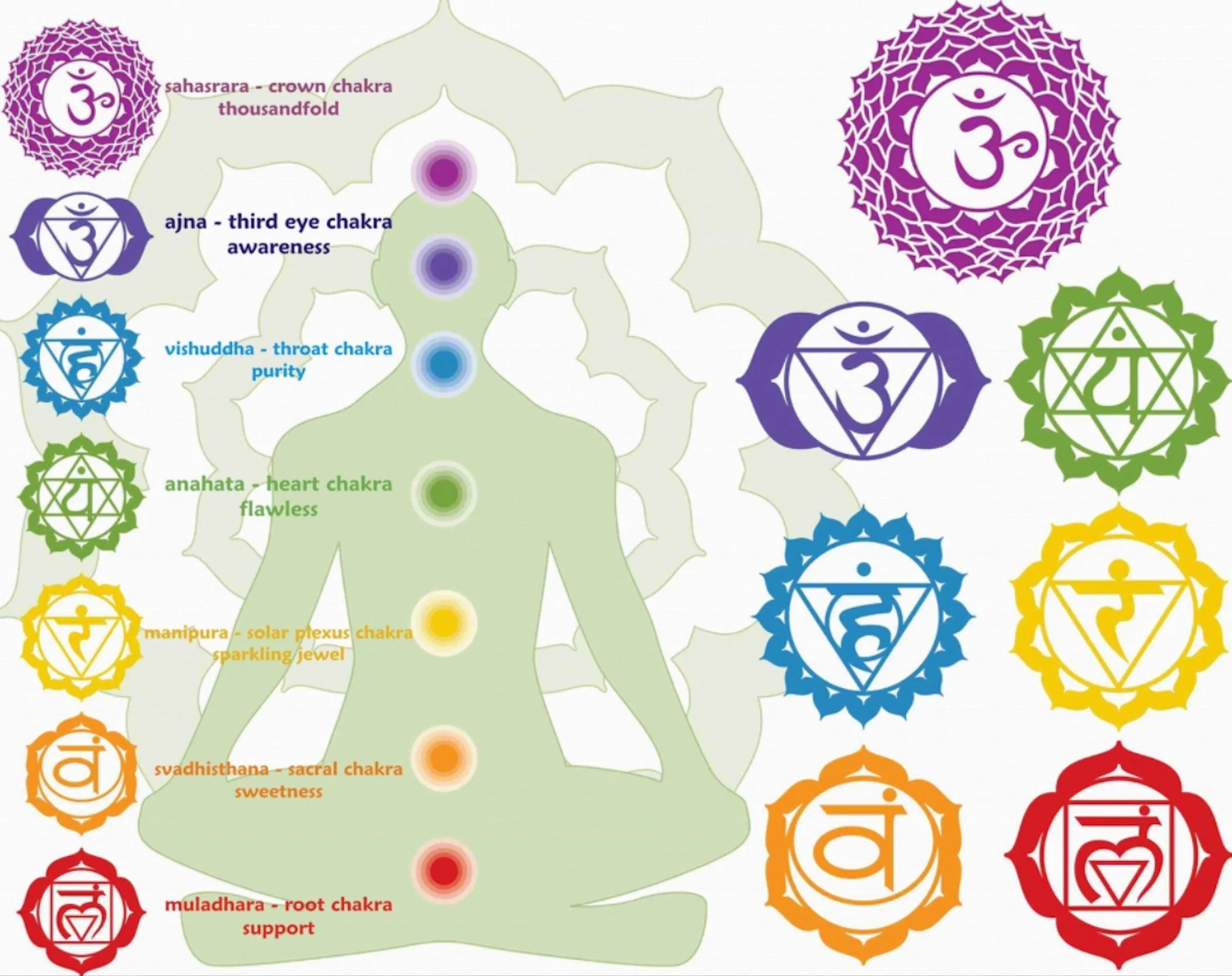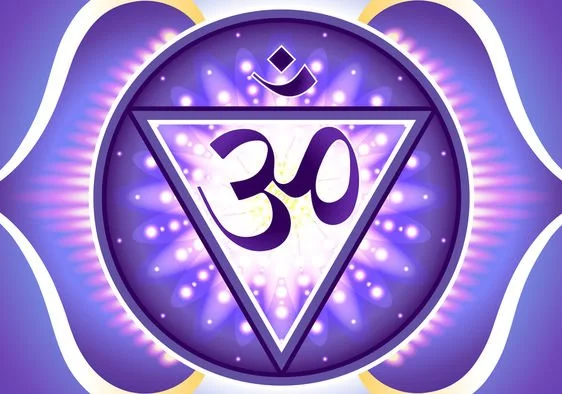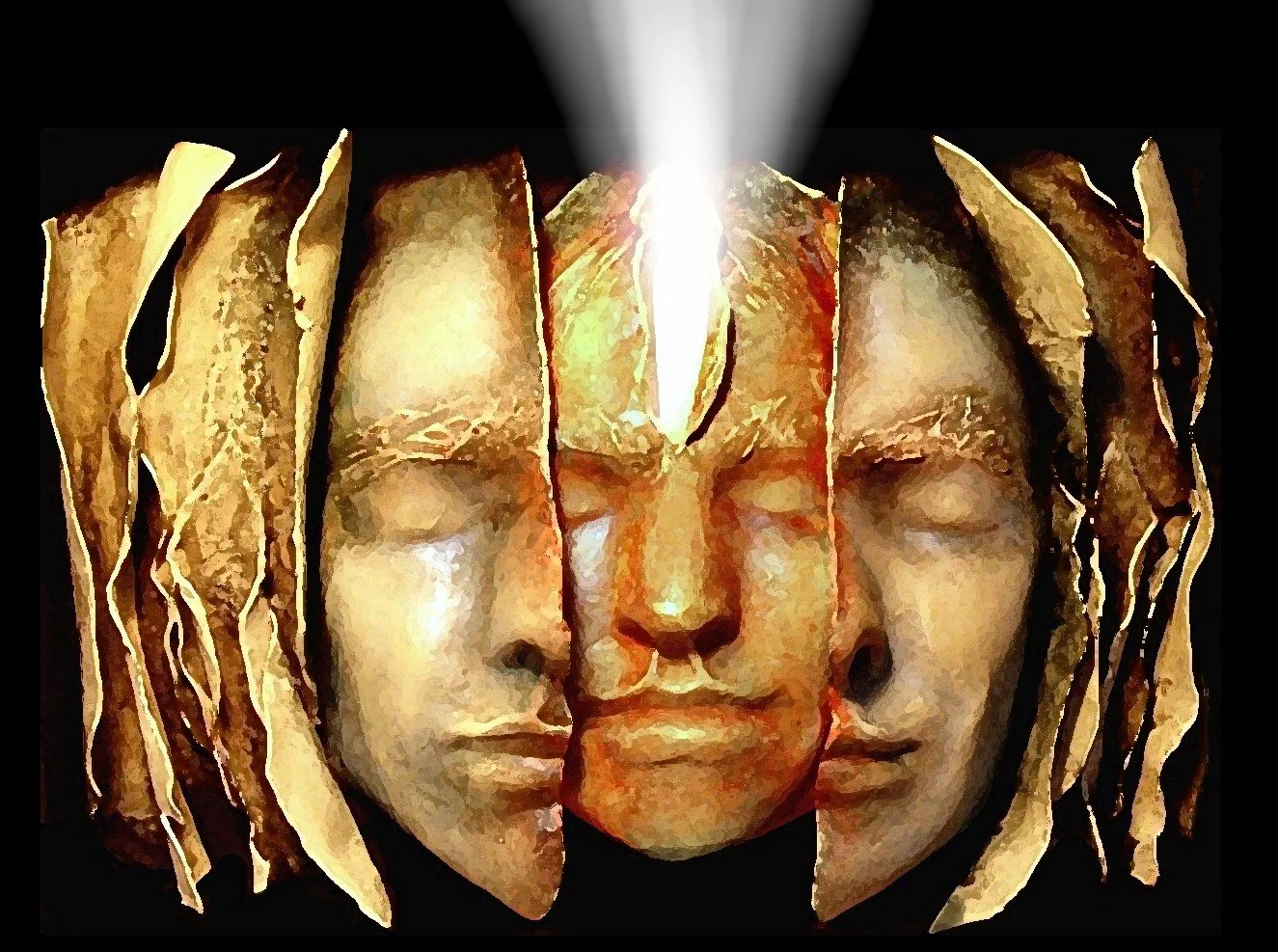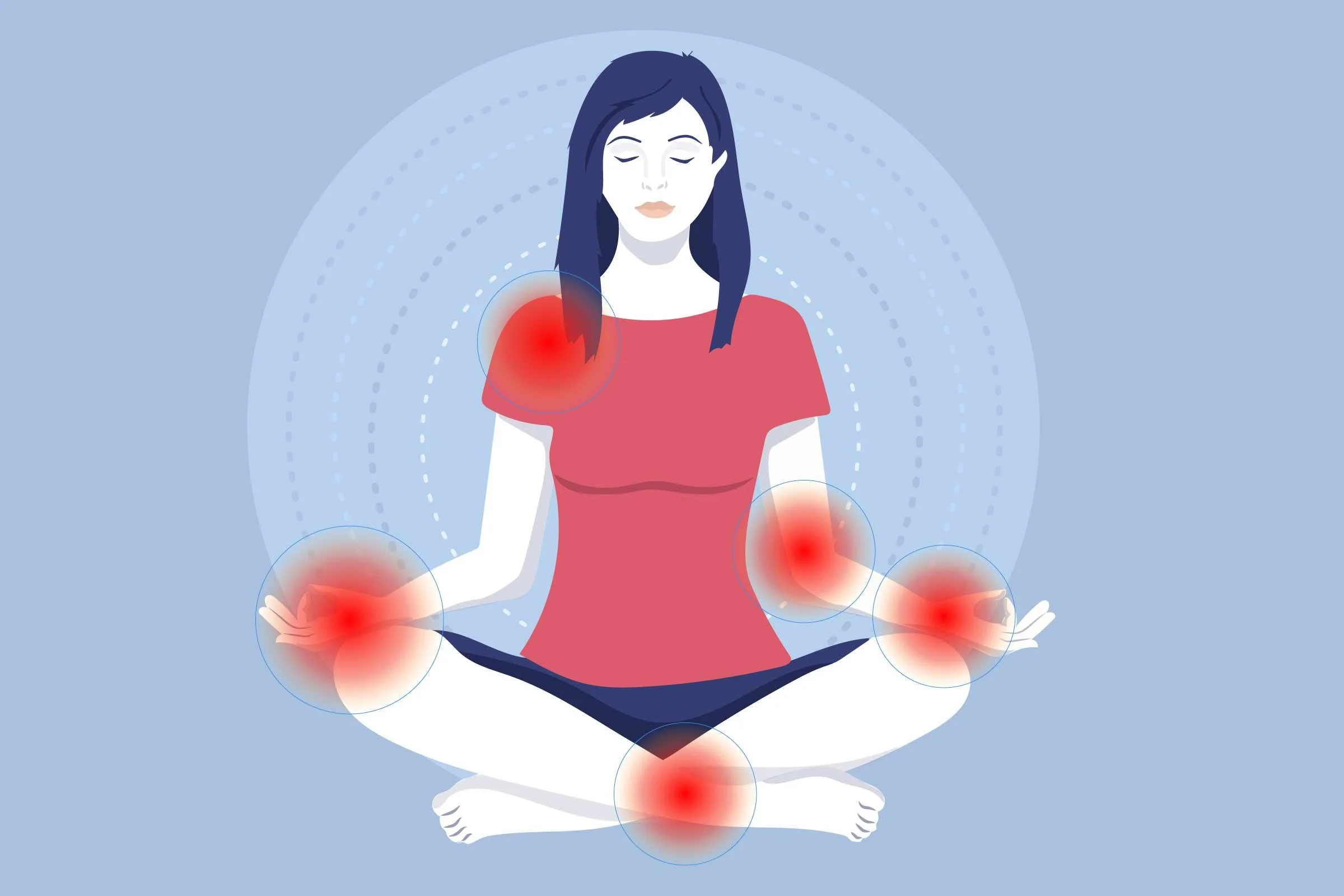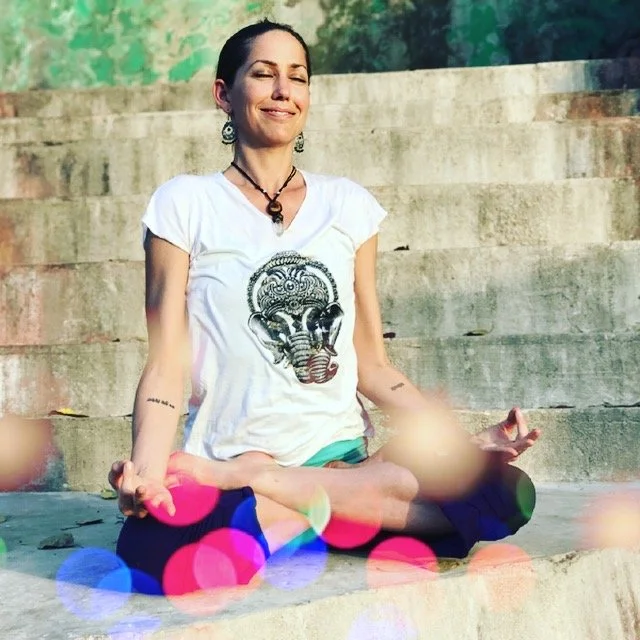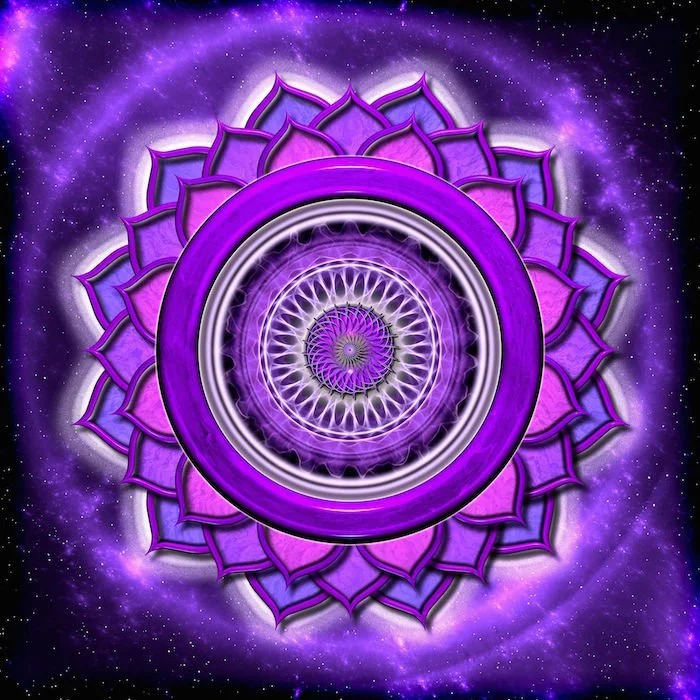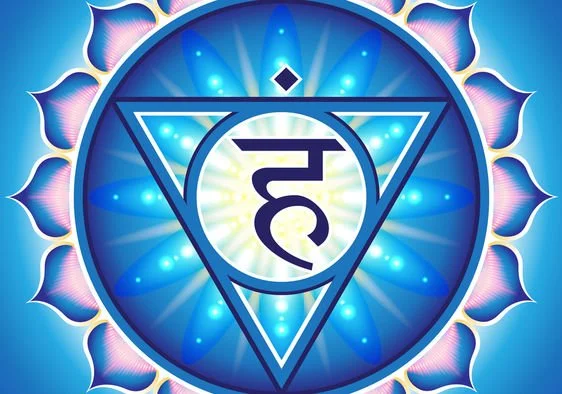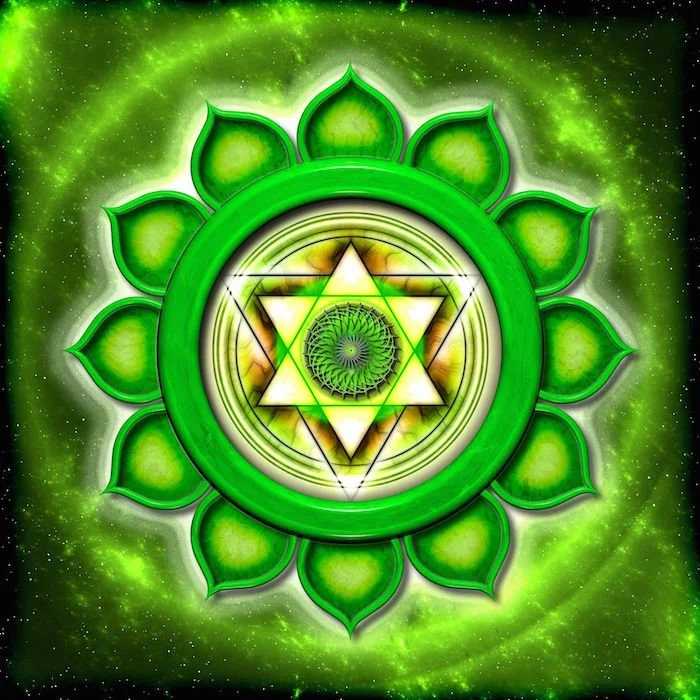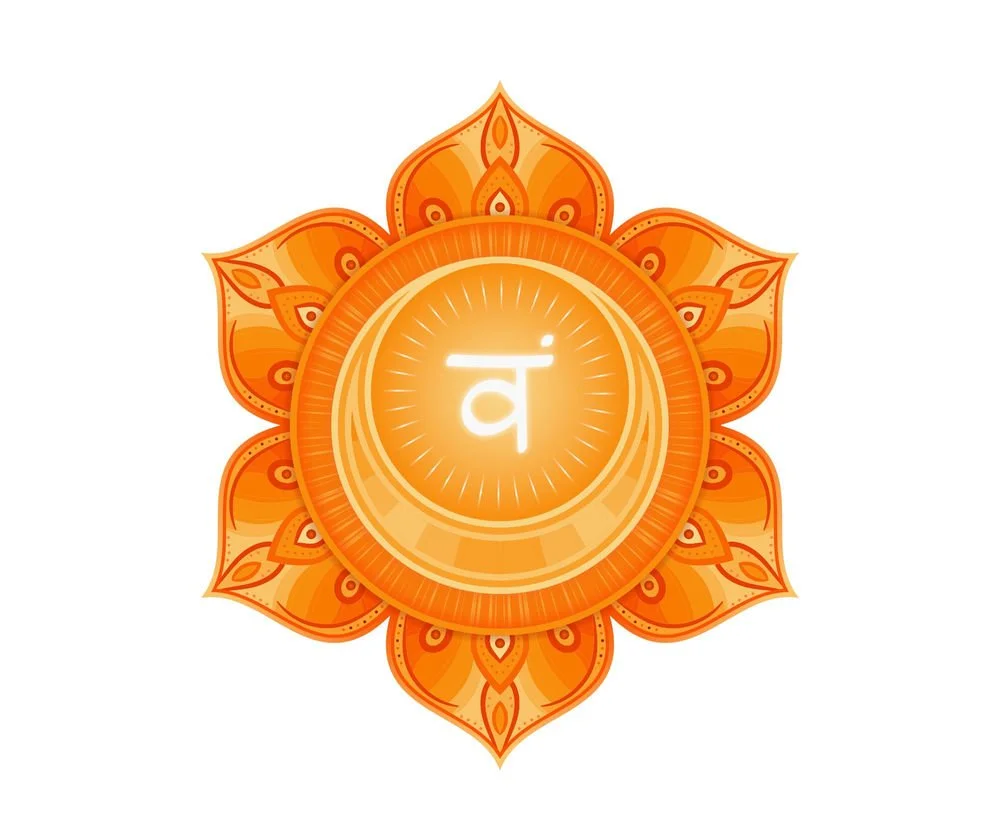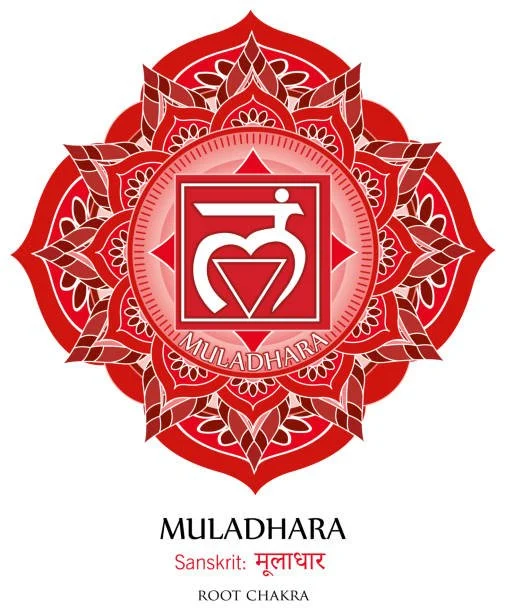“We should write because it is human nature to write. Writing claims our world. It makes it directly and specifically our own. We should write because humans are spiritual beings and writing is a powerful form of prayer and meditation, connecting us both to our own insights and to a higher and deeper level of inner guidance."
If you're interested in hiring a private yoga teacher, it's important to make sure you find someone who is a good match for your needs, preferences, and goals. Here are some questions you might want to ask before booking a session:
The chakras are energy centers that are believed to exist within the human body according to some Eastern spiritual and healing traditions. There are typically considered to be seven primary chakras, which are aligned along the central axis of the body from the base of the spine to the top of the head. These seven chakras are:
Yoga is a form of exercise that can have a profound impact on the body, mind, and spirit. It can benefit all of the systems in your body in a number of ways, including:
Musculoskeletal system: Yoga helps to improve posture, increase flexibility, and strengthen muscles. This can help to reduce the risk of injury, relieve pain, and improve overall joint health.
Cardiovascular system: Certain styles of yoga, such as vinyasa, can provide a cardiovascular workout that can help to improve heart health. The combination of physical movement and controlled breathing can also help to lower blood pressure and improve circulation.
Nervous system: Yoga has been shown to reduce stress and promote relaxation, which can have a positive effect on the nervous system. This is because yoga helps to activate the parasympathetic nervous system, which is responsible for the body's relaxation response.
Respiratory system: Yoga is centered around controlled breathing, which can help to improve lung function and increase oxygen flow to the body. This can also help to reduce symptoms of conditions such as asthma and chronic obstructive pulmonary disease (COPD).
Digestive system: Certain yoga poses, such as twists and forward bends, can help to stimulate the digestive system and improve digestive function. This can help to relieve symptoms of conditions such as constipation and indigestion.
Immune system: Regular yoga practice has been shown to boost the immune system and help the body fight off illness. This is because yoga helps to reduce stress and promote relaxation, which can have a positive effect on the immune system.
Endocrine system: Yoga has been shown to regulate the endocrine system, which is responsible for producing hormones. This can help to balance hormones, regulate metabolism, and reduce symptoms of conditions such as depression, anxiety, and sleep disorders.
These are just a few examples of how yoga can benefit all of the systems in your body, but the benefits are far-reaching and can vary from person to person. To fully experience the benefits of yoga, it's best to make it a regular part of your health and wellness routine.
The shadow is a concept in psychology that refers to the unconscious aspects of the self that are often repressed or hidden from conscious awareness. This includes traits, behaviors, and emotions that may be considered taboo, unacceptable, or negative by the individual or society. Shadow work is the process of exploring and integrating these unconscious aspects of the self in order to become more fully integrated and heal past wounds.
Here are some steps to help with shadow work:
Awareness: The first step is to become aware of your shadow. This can be done by paying attention to your thoughts, feelings, and behaviors that you may be avoiding or repressing. You can also reflect on past experiences, memories, and patterns in your life to gain insight into your shadow.
Acceptance: Once you have identified your shadow, it's important to accept and acknowledge these aspects of yourself. Try to see them as a part of who you are and understand that they serve a purpose in your life, even if they may be unpleasant or uncomfortable.
Exploration: Explore your shadow by looking at it from different perspectives, asking yourself why you have repressed these aspects of yourself, and understanding the reasons behind your behaviors and emotions.
Integration: This is the process of integrating the shadow aspects into your conscious self. This means embracing and accepting all parts of yourself, including the parts you may have previously avoided or rejected. This can be done through practices such as therapy, self-reflection, and mindfulness.
Transformation: As you integrate the shadow aspects of yourself, you may experience a transformation in your relationships, behavior, and emotional state. This can lead to a more fulfilling and authentic life, as well as a deeper understanding of yourself and others.
Shadow work can be a challenging and emotional process, but it can also be a valuable tool for personal growth and healing. It's important to approach it with compassion and patience for yourself, and to seek support from a therapist or trusted friend if needed.
In numerous cultures all around the world, cupping has been utilized as a kind of traditional medicine for thousands of years. It involves utilizing specialized cups to produce a vacuum on the skin, usually made of glass or silicone. The skin and underlying tissues are drawn higher into the cup by the suction caused by heating the cup or by employing a pump to create suction.
Usually, the cups are not removed until after a short period of time.
The following are a few possible advantages of cupping:
Pain relief: Muscle tension, stiffness, and other types of pain are frequently treated with cupping.
Enhanced circulation: The vacuum produced by cupping can aid in enhancing blood flow and promoting the repair of tissues that have been wounded or damaged.
Reduced inflammation: It is thought that cupping works to lessen inflammation by encouraging the release of cytokines, which are immune system-regulating natural substances.
Improved relaxation: Cupping is frequently described as a calming and contemplative experience, which may help to lessen tension and anxiety.
Improved skin health: Because cupping is thought to assist encourage the creation of collagen and other natural skin-healing substances, it is occasionally used to promote healthy skin.
It's crucial to keep in mind that not everyone may be a good candidate for cupping, so it's always a good idea to speak with a certified healthcare professional before attempting any new therapy or treatment.
According to Hindu and yogic traditions, the third eye center, sometimes referred to as the sixth chakra or Ajna in Sanskrit, is one of the seven major energy centers in the body. It is connected with the color indigo or purple and is situated in the middle of the forehead, right above the brows.
The third eye chakra is frequently linked to our intuition, inner knowledge, and capacity to perceive things that are not physically present. It is claimed that it controls our ability to see, imagine, and gain understanding. When the third eye chakra is in harmony and operating at its peak, we have a strong feeling of perception and insight as well as a sense of connection to our inner wisdom and intuition.
Confusion, a lack of direction, and difficulties using one's intuition are among indications of an imbalanced or blocked third eye chakra, as as physical issues including headaches, eye strain, and vision issues.
There are several practices that can be useful to balance and awaken the third eye chakra, including:
practicing practices like writing or meditation that foster inner understanding and intuition
Investing time in tranquil places like nature can help people unwind and think internally.
using mental focus-enhancing techniques like deep breathing exercises or mindfulness.
eating nutritional meals, such as those high in antioxidants and healthy fats, that boost brain function.
taking part in sensory-stimulating activities, such as aromatherapy or sound healing.
receiving Reiki or other energy healing techniques that can assist in chakra clearing and balancing.
Overall, the third eye chakra is a significant energy point that facilitates communication with our inner wisdom, awareness, and intuition. We can develop a better feeling of intuition, imagination, and insight as well as a deeper sense of connection to the world around us by striving to balance and open this chakra.
Self-awareness is defined as the ability to recognize and understand your own thoughts, feelings, and behaviors. It is imperative that we possess a certain amount of it in order to have healthy relationships, perform well at work, and be in good relationship with ourselves.
Improving self-awareness can bring many wonderful benefits such as increased emotional intelligence, better decision making, and improved communication and relationships.
Here are a few ways you can improve your self-awareness:
Pay attention to your thoughts and feelings: Take time each day to sit quietly and pay attention to your thoughts and feelings. Try to identify any patterns or themes that emerge and consider how these thoughts and feelings may be impacting your behavior and experience of life.
Keep a journal: Writing down your thoughts and feelings can be a helpful way to better understand your internal experiences.
Seek feedback: Ask friends, family members, or colleagues for feedback on your behavior. This can help you gain a better understanding of how others perceive you and can help you identify areas where you may want to improve.
Practice mindfulness: Mindfulness involves paying attention to the present moment and can help you become more aware of your thoughts, feelings, and behaviors in real time.
Try new things: Engaging in new activities and experiences can help you learn more about yourself and can help you identify your strengths and areas for growth.
Remember, improving self-awareness is a continuous process and it may take time to see progress. It's important to be patient and to practice self-compassion as you work on improving your self-awareness.
Meditation can be helpful in managing pain because it can reduce stress and anxiety, which are often associated with increased levels of pain. When a person is stressed, the body produces cortisol, a hormone that can increase pain sensitivity. Meditation helps to decrease cortisol levels, reducing stress and its impact on pain.
Here are a few meditation techniques that can help with managing pain:
Body scan meditation: This technique involves lying down or sitting comfortably and focusing your attention on each part of your body, starting from your toes and working your way up to your head. As you focus on each body part, you release any tension and allow yourself to sink into a state of deep relaxation.
Breathing meditation: This involves focusing on your breath, inhaling and exhaling deeply, and counting each inhale and exhale. This helps to slow down your breathing and bring you into a more relaxed state, reducing stress and pain.
Guided imagery meditation: This involves imagining a peaceful scene in your mind, such as a beach, a forest, or a meadow. You focus on the sights, sounds, and sensations of this place and allow yourself to sink into a state of deep relaxation, reducing stress and pain.
Mantra meditation: This involves repeating a word or phrase, either silently or out loud, to help you stay focused and bring you into a state of relaxation. This helps to reduce stress and pain by shifting your focus away from discomfort.
It's important to note that everyone experiences pain differently and what works for one person may not work for another. It's recommended to try different techniques and find what works best for you. It's also important to talk to a healthcare professional before starting any new meditation practice, especially if you have a medical condition or take medication.
Here are some steps to help you begin a meditation practice:
Set aside time: Choose a time of day that works best for you and set aside a few minutes each day for meditation. Start with just a few minutes and gradually increase the time as you become more comfortable with the practice.
Find a quiet place: Create a quiet and comfortable space where you can sit undisturbed. You can sit on a cushion, chair, or blanket, or lie down if that's more comfortable for you.
Focus on your breath: Start by simply focusing your attention on your breath. Pay attention to the sensation of the air moving in and out of your body. If your mind begins to wander, simply redirect your attention back to your breath.
Use a mantra or object of focus: If focusing on your breath is difficult, try using a mantra, such as "om" or "peace," or focusing on a visual object, such as a flower or candle flame.
Keep it simple: Meditation doesn't have to be complicated. Start with a simple practice and let it evolve naturally over time.
Be patient: Meditation is a practice, and like any practice, it takes time and patience to develop. Don't be discouraged if your mind wanders or if you find it difficult to focus at first. Simply keep returning to your breath or your mantra and eventually, your mind will quiet and you'll be able to focus more easily.
Make it a daily practice: The more you meditate, the easier it will become and the deeper you'll be able to go. Try to make meditation a daily practice and stick with it, even on days when you don't feel like it.
Remember, meditation is a personal and individual practice, and what works for one person may not work for another. Be open to trying different approaches and finding what works best for you. With time and practice, you'll likely find that meditation becomes an essential part of your day and an invaluable tool for finding peace, clarity, and well-being.
Remember that deepening your yoga practice is a lifelong journey, and that the most important thing is to approach it with curiosity, open-mindedness, and a commitment to growth and self-improvement.
Back pain is a common condition that affects people of all ages and can be caused by a variety of factors such as poor posture, injury, or spinal conditions. Massage therapy is a popular and effective method for relieving back pain and improving overall health.
Here are some of the benefits of massage therapy for back pain:
Relieves muscle tension: Massage therapy can help to release tension in the muscles and alleviate pain. This is especially true for back pain caused by tight muscles, as massage can help to loosen them and reduce discomfort.
Improves circulation: Massage therapy increases circulation, which helps to deliver oxygen and nutrients to the muscles and other tissues. This can speed up the healing process and reduce pain.
Reduces inflammation: Inflammation can contribute to back pain, and massage therapy can help to reduce it. This is because massage increases the production of anti-inflammatory chemicals in the body.
Increases range of motion: Massage therapy can help to increase flexibility and range of motion, which is especially important for people with back pain. By loosening tight muscles and improving circulation, massage therapy can help to improve mobility and reduce pain.
Promotes relaxation: Massage therapy can help to relieve stress and promote relaxation, which can have a positive effect on back pain. This is because stress and tension can make pain worse and massage can help to reduce both.
These are just a few of the benefits of massage therapy for back pain, but it's important to remember that everyone's body is different and what works for one person may not work for another. It's best to consult with a massage therapist to determine the best course of treatment for your individual needs.
In terms of what areas are addressed, massage therapy can target specific areas of the back, such as the lower back, upper back, and neck. For example, a lower back massage may focus on the lumbar region and hips, while an upper back massage may focus on the thoracic region and shoulders. A neck massage may focus on the neck and upper back muscles. A full-body massage can also be beneficial for back pain as it can help to relieve tension throughout the body.
In conclusion, massage therapy can be an effective method for relieving back pain and improving overall health. Whether you are experiencing lower back pain, upper back pain, or neck pain, massage therapy can help to alleviate discomfort and promote relaxation. By incorporating massage therapy into your health and wellness routine, you can help to reduce pain and improve the health of your back.
Back pain is one of the most common physical complaints that I hear from my clients and students, and it can be caused by a variety of factors such as poor posture, prolonged sitting, improper lifting, spinal conditions, and even sleeping position. Despite the different causes of back pain, yoga can be an effective way to relieve discomfort and prevent further injury.
Overall, the crown chakra is a significant energy point that facilitates our ability to communicate with the divine and develop a feeling of meaning and purpose in our life. We may strengthen our spiritual connection and live our life with more awareness, presence, and transcendence by attempting to balance and open this chakra.
Overall, the throat chakra is an important energy center that helps us to express ourselves authentically and communicate effectively with the world around us. By working to balance and open this chakra, we can cultivate a greater sense of self-expression, creativity, and confidence in our ability to communicate our truth to others.
According to Hindu and yogic traditions, the heart chakra, also known as the fourth chakra or Anahata in Sanskrit, is one of the seven major energy centers in the body. It's center is on the chest, and the color it belongs to is green (although some traditions also associate it with the color pink).
The ability to love and be loved, as well as our capacity for emotional connection with others, are frequently linked to the heart chakra. It is claimed that it controls how compassionate, forgiving, and kind we feel. When the heart chakra is in harmony and operating properly, we experience openness, love, and empathy for others.
Feelings of loneliness, resentment, and trouble relating to others, as well as physical symptoms like heart issues, asthma, and upper back discomfort, are some indications that the heart chakra is out of balance or blocked.
There are several practices that can be useful to balance and open the heart chakra, including:
demonstrating compassion and kindness to others.
Developing the ability to forgive oneself and others.
taking part in social activities that foster emotional intimacy and connection, such as volunteering or spending time with close friends and family.
exercising in a way that strengthens the heart, like yoga or cardiovascular exercise.
eating healthy meals, such as leafy greens and other plant-based foods, that boost heart health.
receiving Reiki or other energy healing techniques that can assist in chakra clearing and balancing.
Overall, the heart chakra is a significant energy point that aids in developing our capacity for emotional connection with others as well as our capacity for empathy and compassion. We can live our lives with more love and understanding and connect more intimately with the world around us by learning to balance and open this chakra.
In general, the solar plexus chakra is a significant energy point that contributes to our sense of empowerment, self-assurance, and control over our lives. We can develop a stronger sense of personal strength and self-esteem and live our lives with more clarity and purpose by learning to balance and open this chakra.
According to Hindu and yogic traditions, the sacral chakra—also called the second chakra or Svadhisthana in Sanskrit—is one of the seven major energy centers in the body. It is connected with the color orange and is situated in the lower belly, immediately below the navel.
The energy of our emotions and creativity is frequently linked to the sacral chakra. Our feeling of pleasure, desire, sexuality, and emotional health are supposedly governed by it. We feel imaginative, passionate, and emotionally bonded to both ourselves and other people when the sacral chakra is in balance and operating properly.
Feelings of emotional numbness or alienation, as well as physiological markers like poor libido, menstruation issues, and lower back discomfort, can all be indicators of an imbalanced or blocked sacral chakra.
There are a number of practices that can be beneficial for balancing and opening the sacral chakra, including:
painting, dancing, or writing are examples of creative pursuits.
To better connect with and comprehend our emotions, we can practice mindfulness and emotional awareness.
Yoga or other physical exercises that promote flexibility in the body and the mind.
exploring one's own sexual energy in a safe and consensual way or engaging in healthy sexual engagement.
eating nutritional meals that assist the digestive and reproductive systems, such as orange-colored foods, sweet fruits, and healthy fats.
receiving Reiki or other energy healing techniques that can assist in chakra clearing and balancing.
The sacral chakra is a significant energy center that promotes our ability to feel emotionally and artistically connected to one another and to the world around us. We can build a deeper sense of pleasure, passion, and emotional well-being in our lives by trying to balance and open this chakra.
According to Hindu and yogic traditions, the root chakra—also called the first chakra or Muladhara in Sanskrit—is one of the seven major energy centers in the body. It is related with the color red and is situated at the base of the spine.
It is believed that the root chakra controls our sense of stability, security, and safety. It serves as the structural core of our entire energy system and is the source of both our mental and emotional fortitude. We get a sense of security, centeredness, and grounding when the root chakra is balanced and operating appropriately.
Feelings of fear, insecurity, and worry are some symptoms of an imbalanced or blocked root chakra, as are physical complaints such lower back pain, constipation, and exhaustion.
There are a variety of techniques that can be beneficial for balancing and opening the root chakra, including:
Grounding activities include being outside in nature, being barefoot on the ground, and doing yoga.
You can feel more connected to your body through physical exercise such as running, dancing, or other types of physical activity.
eating nourishing and grounding foods, such as red foods, foods high in protein, and root vegetables.
using visualization techniques and meditation that emphasize the root chakra.
receiving Reiki or other energy healing techniques that can assist in chakra clearing and balancing.
In general, the root chakra is a significant energy point that contributes to our sense of security, stability, and grounding in both our physical and emotional bodies.
What if yoga and meditation were taught in elementary schools and considered as important as math, science, and English?
What would happen if we all understood that, no matter what the issue we are dealing with, we have unlimited access to top notch pharmaceuticals that are always available to us (and personalized for us) and that they were already inside of us, accessed by practicing simple and ancient yogic practices?
What if we we were empowered by the knowing that our breath is so intelligent and healing, that not only can we use it to create happier mind states and to heal ourselves of old wounds, but also that we can add quality and balance to our lives simply by being mindful of and balancing our breath?
What if all of us knew that we had the ability to expedite healing in others (and ourselves) by our words, our touch, our thoughts, and our love?
What if we were taught that everything we need is already inside of us?
What would the world look like?



